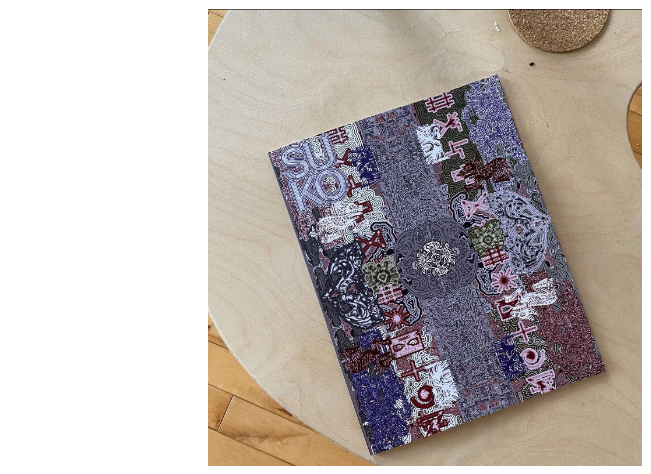Ornate lines intersect and intertwine in an eye-catching design, etched in a variety of burgundy, gray, green, and purple hues. Designed by visual artist William Mora, this intricate image, pulling inspiration from the artist’s Colombian roots, serves as a gateway to SUKO Magazine’s glossy 100-page spread featuring interviews with and creations from 10 diverse artists.
An ambitious artistic endeavour, SUKO Magazine was conceived by Concordia students Sophie Dixon and Kioni Sasaki-Picou. The name comes from Sasaki-Picou’s middle name “Satsuko,” meaning “child,” and with the pair’s goal for the publication to be a non-judgemental space reflective of the curiosity and creativity of children, SUKO was the perfect fit.
Developed from passionate conversations between the two friends, SUKO Magazine seeks to provide a safe and uplifting platform for artists. In particular, Dixon and Sasaki-Picou want to highlight work from Black artists, Indigenous artists, queer and trans artists, and other marginalized individuals that are often misrepresented, underrepresented, or outright excluded from traditional artistic institutions.
“We didn’t really see a space where people felt like they weren’t being pigeonholed in an institutional sense,” Dixon explained in an interview with The McGill Tribune. “A lot of artists we know have had experiences where gallerists or different people of authority don’t allow freedom of expression in their artwork.”
SUKO offers artists an avenue for sharing innovative pieces and grants them creative control—which they may lack in a gallery space—without sacrificing formal aesthetics. Dixon and Sasaki-Picou collaborated with a hardworking team of editors and designers to create a finished project that marries soulful, artistic content with a sleek design that could be sold in galleries or boutiques to provide featured artists with professional exposure.
“[We are aiming for] grassroots combined with the more corporate [aspect] to be able to have the best of both worlds [….] Many grassroots [projects] never get the attention, and many corporate [projects] get all the attention but lack a lot of the soul and passion that goes into it,” Sasaki-Picou said.
The pair aims to foster a sense of artistic community through SUKO’s collaborative creation process. Starting in fall 2021, they gathered a group of creatives whose artistic processes aligned with the publication’s values, hosting interviews and photoshoots with the artists throughout the year. The team gave artists ample time and space to consider which pieces they wanted to present and how to display them in the publication, allowing them to come to a conclusion on their own terms. The first edition was released in October 2022, two years after Dixon and Sasaki-Picou had the idea; however, by taking their time with the creation process, they hoped to push back against the pressures of “hustle culture” and notions of the artist as a solo creator.
“Growing up in Toronto there is such a saturated community of artists who do so many things [….] You have this pressure to have hustle culture and be doing everything yourself,” Sasaki-Picou said. “I think [SUKO] definitely was the opportunity for us to give space to other people.”
The magazine’s second issue is slated for release in August 2023, though both Dixon and Sasaki-Picou hope to turn SUKO into a bi-annual publication. Other aspirations include featuring a greater number of artists, opening artist submissions to those from outside of Montreal and potentially even outside of Canada, and producing a theme-based issue.
While anticipation for what’s to come is high, the SUKO team wants to give themselves time to curate and publish the next iteration. The team consists of students and artists who impressively juggle their studies with work and their own artistic endeavours. The process of collecting submissions, interviewing artists, formatting the magazine, and publishing is a time-intensive labour of love.
It’s all worth it in the end, though, as Dixon points out.
“A lot of artists we have worked with […] have told us they’re happy to be a part of the project [which] is so uplifting to hear and also to inspire other people to do their own creative projects.”
Artists wishing to work with SUKO can contact them via email at [email protected] . Artists who identify as people of colour, Black, Indigenous, or belonging to other marginalized communities will be prioritized in the application process. Volume 1 of SUKO is currently available for purchase.








